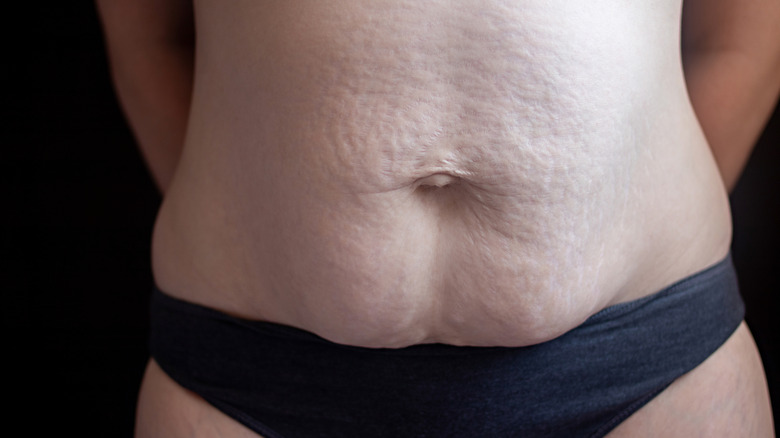What Is Diastasis Recti And How Can You Treat It?
When you picture someone who is pregnant, you might think of glowing skin, shiny hair, and a baby bump. What you don't see is what's happening just beneath the surface of their skin, as their muscles work to accommodate a growing belly. Somewhere between 65% and 100% of people who go through pregnancy experience diastasis recti, a condition where the connective tissue between the rectus abdominis muscles pull apart and leave behind a gap (via Verywell Family).
The expansion of the uterus during pregnancy pushes on the abdominal muscles and begins to stretch out the connective tissue that holds the abdominal muscles together. When the distance between the rectus muscles becomes abnormally separated, a noticeable ridge or bulge might appear on the abdomen (via Healthline Parenthood). Many people might not notice any signs of diastasis recti until after their pregnancy. Signs of the condition can include poor posture, lower back pain, constipation, and bloating. Difficulty lifting objects and general abdominal weakness and instability can also be postpartum signs of diastasis recti. After pregnancy, a bulge in the abdominal area caused by diastasis recti may cause someone to look like they are still pregnant.
How do you know if you have diastasis recti?
Other factors that contribute to diastasis recti include having a large baby, being pregnant with multiples, a second or subsequent pregnancy, or being pregnant over the age of 35 (via Verywell Family). People who suspect they may have diastasis recti can see a doctor to be examined and diagnosed by looking at the amount of abdominal separation above the navel, below the navel, or both. Self-checks for diastasis recti can be done by lying down and feeling for a gap between the abdominal muscles above and below the navel. Diastasis recti can be treated in a number of ways that can decrease the gap between the abdominal muscles or close it completely.
Physical therapy and specialized exercises can help with increasing abdominal muscle strength (via Mayo Clinic). Some exercises can do more harm than good, so it's important to have professional guidance before embarking on an exercise routine to fix diastasis recti. While physical exercise may help improve the abdominal gap, diastasis recti cannot always be fixed by exercise alone. Surgery might be an option to repair the muscles if weakness in the core is causing pain or keeping someone from living a normal life.


